Nancy S. Mure's Blog, page 3
March 16, 2016
RECIPE: ST. PATRICK'S DAY PESTO

Everyone eats green on St. Patty's Day! Anything green goes on this day of laughter and fun. In fact, the greener your meal the better, and I've got just the thing! Since the standard for St. Patty's Day is corned beef and cabbage, I wanted to create something green, healthy, organic and meatless. This year I'd like to share my favorite St. Patrick's Day Pesto.
What makes a pesto standout is the quality of the ingredients you use to prepare it. You want the finest imported, cold pressed organic olive oil, preferably from Italy. You want the most flavorful organic walnuts you can find and the freshest garlic for this dish. Any quality market should have fresh organic hyroponic basil available off-season.
Pesto as you know, is an extremely healthy dish that isn't only limited to pasta. Pesto is excellent on top of chicken, salmon or on a sandwich so feel free to spread the green! This St. Patty's Day pesto recipe is non-dairy. However, if you like your pesto with cheese go ahead and add 1/4 of cup of fresh Parmesano Grano, or Pecorino Romano of the highest quality or whichever vegan cheese you prefer. If serving with pasta this pesto also sits perfectly on Barilla gluten-free pasta, which is the pasta I recommend for those who are gluten-free.
Ingredients:
3 bunches fresh basil leaves (or 3 containers of basil from Whole foods)A nice handful of organic walnuts (about 1/2 cup)1 garlic clove or to taste1/4 - 1/2 cup imported olive oilHimalayan sea salt to tasteUsing a high speed blender, add all ingredients and mix on low speed, slowly moving the speed up to medium until pesto is blended to your preference. Taste, adjust salt, and serve over pasta, fish, chicken or as a spread on any sandwich.
HERE'S WHY YOU SHOULD BE MAKING BANANA MILK
Nut milks have become increasingly popular as a replacement for dairy. However, some companies have been cited for using fillers and even gut irritating carrageenan as a thickener in their nut milks. While cashew, almond and pistachio milks are all great additions to your morning breakfast muesli or smoothie, banana milk as them over a barrel.
Bananas are a known source of fiber, potassium, magnesium, Vitamin C and B-6. Add a date and aside from the vitamins and minerals just mentioned, you've added more fiber, calcium and iron. The milk also thickens up like a boss without the need for any artificial thickening agents. Can you say sweet?
You will need:
1 medium organic banana
1 cup distilled or pure water
1-2 organic Medjool dates
Dash of cinnamon (optional)
In a high speed blender, add water and cinnamon to the bananas and dates as illustrated below. Mix on medium, then high speed for one minute and serve!
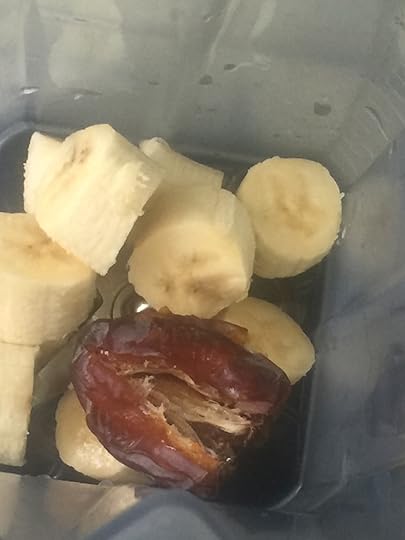
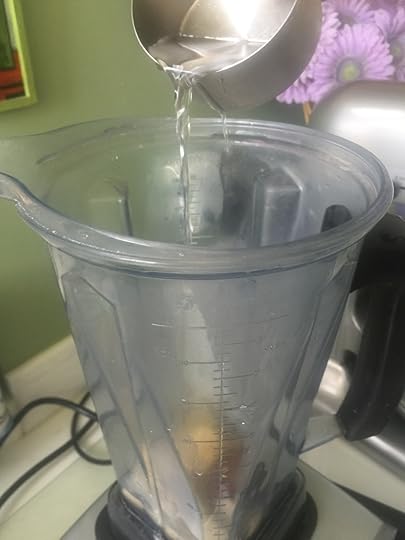

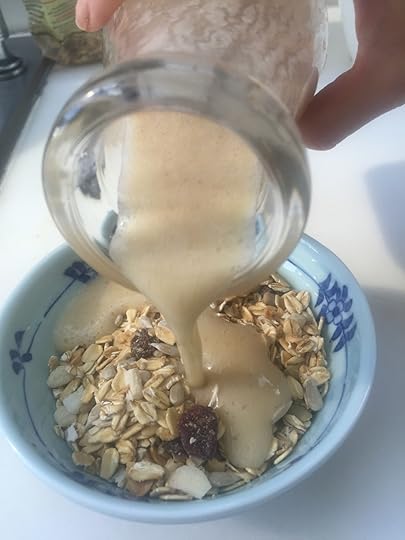
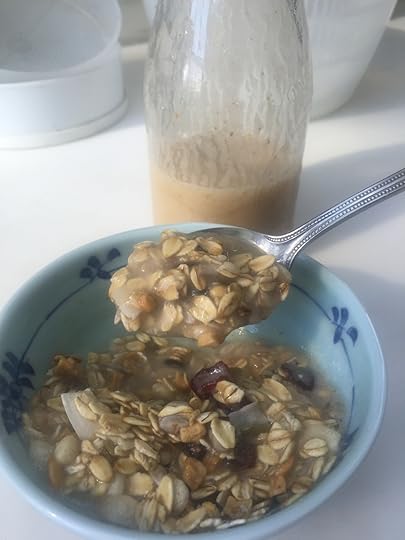
March 4, 2016
How to Get Over Your Fruitphobia
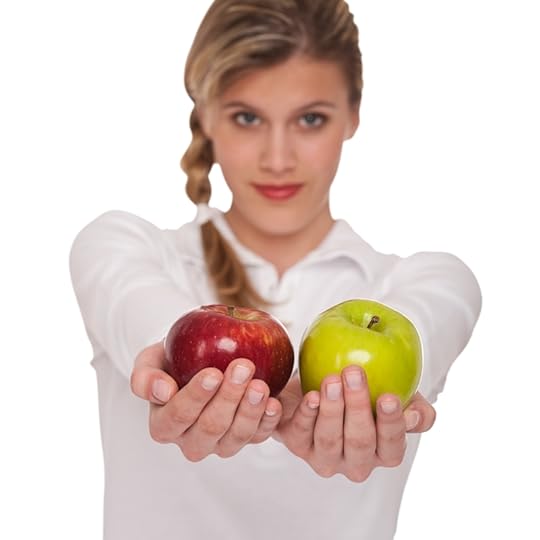
A recent UCL Study reports that people who ate seven or more portions of fruit and vegetables a day had a 42% lower risk of death than those who ate less than one portion.
Another study presented at the European Society of Human Reproduction and Embryology’s annual meeting in Lisbon of more than 1,100 men and women concluded that those with healthy diets were much more likely to conceive. The study found 55% of fertile men consumed fruit five times a week compared with 73% of fertile women therefore, regular consumption of fruit (and vegetables) was associated with far higher levels of fertility.
Despite this proof, so many people have fruitphobia -- a fear of eating fruit -- particularly diabetics who have been told by their doctors not to do so. The fear of rising sugar levels stops them from consuming the very thing that will nourish, heal them and extend their life.
Not surprisingly, most diabetic fruitphobics think nothing of adjusting their insulin for a cookie, pasta, rice or wheat bread, which is shown to raise their sugar as high as a candy bar but when it comes to fruit they'll pass.
Fitness enthusiasts and trainers also pass up on the fruit due to a mistaken belief the sugar hinders weight loss efforts. Nothing could be further from the truth. Fruit does not cause the body to store belly fat.
Benefits of fruit go far beyond what you've been told. Fruit is the difference between living a long life and living a short one -- it is the difference between fertility or infertility, illness or health and the difference between being nourished and fed.
It's important to know this truth: fruit eaten whole, does not deliver its natural sugar in blunt force, like say a smoothie or a fresh juice, so the glucose does not cause the storage of belly fat. Fiber allows the fruit to release the natural sugar slowly into the bloodstream via the process of digestion. Eating fruit whole also allows you to eat slower and feel more satiated.
To let go of your fruitphobia embrace the positive attributes of fruit:
Fruit has protein.Fruit is packed with minerals.Fruit loaded with vitamins.Fruit is high in fiber.Fruit has natural sugar, which works with the body as opposed to refined sugar which is a known depressant of immune system according to an undisputed study done in 1973 by theFruit is anti-inflammatory.Fruit is alkaline.Fruit is the fastest food on earth."Fruit in the morning is golden..." as the saying goes. Having three fruits first thing in the morning supplies the body with much needed energy, nutrients, fiber, natural sugar, protein, vitamins and minerals. Three fruits in the morning will not only satisfy you, it'll keep digestion efficient, elimination regular and keep you feeling satisfied beyond lunch.
Since Type II Diabetes is a diet related disease, fruit eaten regularly along with a diet high in vegetables (80%), low in protein (10%) and moderate in good fats (10%) can also help to reverse the disease.
Non-diabetics may eat fresh organic fruit liberally to wean off of refined sugar by having fruit each time there's a craving. Since sugar cravings in general are due to mineral deficiency, swapping out fruit for junk will not only satisfy the craving for sweets, overtime it will replace depleted minerals, squelch further cravings and vastly improve health.
March 3, 2016
The One and Only Cause for Sugar Cravings Is This...
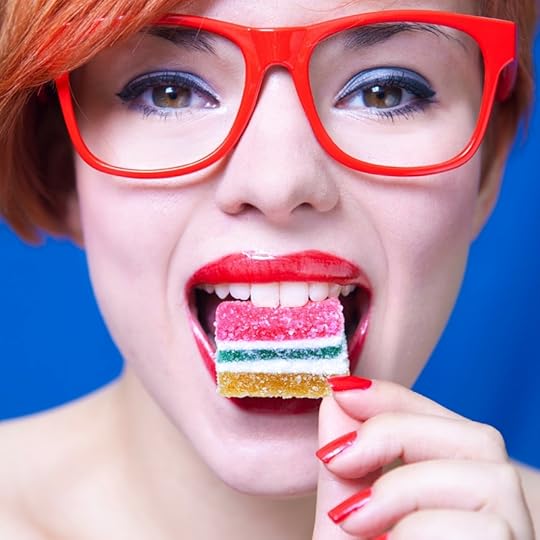
Studies show that sugar is addicting. Studies also show that sugar is a known depressant of the immune system. That being said, if sugar is addicting and depresses the immune system, why do Americans crave so much of it?
It may surprise some to learn that sugar is part of our DNA and genetic structure. Our bodies and brain rely on sugar or glucose to function properly. However, despite what you've been led to believe, sugar cravings are not an addiction. Our need for sugar is a physiological response that is perfectly natural. When the body gets proper nourishment, it no longer craves sugar. To explain, sugar cravings are a symptom of mineral deficiency.
When you think of sugar, don't think of the white stuff... refined sugar is disease-causing and bad for you. When you think of sugar, think fruit. Fruit contains the natural sugars, as well as the vitamins and minerals humans need to preserve and promote health and healing. To overcome sugar cravings all you need to do is reach for fruit!
Humans crave sugar specifically because they are deficient in iron. However, if you're deficient in iron and you've been living the processed food life, it's highly likely that you're deficient in other trace minerals as well. When humans are deficient in essential trace minerals it causes certain seeking behaviors that show in the form of overeating and binge eating.
Would eating a steak help to replenish iron? Yes? Will it stop the sugar cravings? Not likely. Think about how the average American grows up in this country. Immediately after birth, without a second thought, many of us are put on a processed "formula" as our main source of food. Even if we're breastfed for a time, eventually we're moved on to processed cereals and processed jarred foods, By the time we're toddlers, we're eating processed chicken fingers, french fries, fish sticks, yogurt, pizza and other junk food on-the-go. Is it any wonder our bodies are deficient? We've been eating processed food all our lives!
By the time we grow into teenagers, we've had every childhood disease in the book and we're in full binge mode, reaching for cookies, chips, chocolate and processed junk at every turn. Our faces are full with acne, we are moody, crampy and with hormones raging, our bodies are crying out to be nourished. In an unconscious attempt to replenish the minerals we're missing, seek a temporary fix by eating. Our mineral deficiencies cause us to seek out food (any food) to fill that nutritional void and instinctively we reach for the refined sugar. This is the number one reason we see binge eating disorder and PICA behaviors in humans and animals. This is one of the main reasons we develop so-called food addictions and are plagued with obesity.
The one and only way to overcome sugar cravings is to nourish yourself. Replace fresh organic fruit or unsulfured, dried fruits whenever there's a craving for sugar. You will also do well to vastly increase the amount of fresh vegetables in your diet. These foods pack a high essential trace mineral punch and will provide you all the nourishment you need to overcome your sugar addiction.
You will find, if you are consistent with this that you can succeed in nourishing your body on a cellular level so it will no longer crave sugar.
February 29, 2016
Here's Why Your Skin Is An Inside Job

Each summer, as part of an international exchange program, we house Italian and Spanish students for three weeks. They stay with us to practice English and educate themselves on American culture. Year after year the students arrive bright-eyed, cleared-skinned and energetic. However, after spending three weeks in the states, they head home with clogged pores, blotches, blackheads and some develop cysts on their face, neck, chest, back, and shoulders.
The meals requested by the students are typical American fare: hot dogs, hamburgers, french fries, meatloaf, Thanksgiving dinner, onion rings, peanut butter and jelly, and pancakes are among the most popular requests. These were often washed down with milk. Funny, I even remember one student leaving the U.S. stocked with Pop-Tarts to bring to Spain. As the students tour New York City each day, they enjoy additional fast food options, relishing grilled cheese, ice cream and other ethic fare from the culinary food trucks and shops around town.
Year-in and year-out I watch as my students leave New York City exhausted with acne and breakouts, due to poor dietary choices. This cements for me what I know for sure: that the skin is an inside job.
So many people ignore this simple fact, mostly parents. The watch as their kids develop acne, and off they go purchasing pro-active or running them to the dermatologist to get "side-effect" prescriptions for medication to control. What surprises me is that parents allow the continual intake of fast and processed foods.
While some studies are inconclusive that acne and diet are related, there are many that confirm the connection between improper diet and acne. Not surprisingly, a study in the Journal of the American Academy of Dermatology cites sugar and dairy as the main culprits of worsening acne. Incidentally, constipation -- a back up of the bowel, is another chronic condition that seals the deal when it comes to bad skin.
Here is one simple truth. What goes into the body comes out one way or the other. The skin is an elimination organ like the kidneys, the lungs, the rectum and the liver. Its job is to expel toxins. If the diet is poor and the bowels are blocked due to poor dietary choices, then you can bet it's going to show in the skin. End of story.
You'd be hard-pressed to find a vegan, a vegetarian, or even a part-time vegan for that matter with bad skin. This is because number one cause of young, radiant and vibrant skin is diet, followed by good digestion and efficient elimination. While the number one root case of bad skin is poor diet and poor digestion and elimination coupled with hormonal changes.
The bottom line is this: healthy, radiant and clear skin is as simple as eating foods that work with body versus eating foods that work against it. Foods that work against the body are:
Refined sugarDairyFast foodsProcessed foodsWhey and protein powdersAlchoholCoffeeHigh protein dietsFoods that work with the body are anti-inflammatory, abundant in vitamins and minerals, collagen and encourage good digestion and elimination. These are:
FruitsVegetablesGood fats like coconut, nuts and avocadoBone BrothThe needs of the skin and the body are pretty basic. Eating a diet high (at least 80%) in fruits and vegetables and low (approximately 10%) protein and (10%) good fats, as well as sweating to rid the body of toxins, is the ideal way to attain glowing and radiant skin. Avoid topical treatments as these are a waste of money. Instead invest in learning how to EAT by loading up on the proper foods for the best skin and health
February 26, 2016
The One Reason You Aren't Getting Sleep

Sleep is recuperative, reparative and restorative. Sleep is one of the most important aspects of good health. If you aren't sleeping well, you aren't regenerating healthy cells. If you aren't generating healthy cells, you set ourself up to develop disease. It's as simple as that.
What's more, sleep is how we heal. It's now we get over the flu. It's how we regenerate night after night. Sleep is also an important way to keep appetite in check because when you're tired, you tend to want to eat more. All in all, there's no denying that sleep is central to overall health and wellbeing.
So why aren't you getting more sleep?
It's not a complicated question. With Americans burning the candle at both ends, sleep suffers. The CDC reports that an estimated 50-70 million US adults have sleep or wakefulness disorder. According to a Gallup poll four in 10 Americans get less than the recommended amount of nightly sleep, compared with the 11% who did so 70 years ago.
Specialists have named many causes of insomnia, blaming technology, room temperature, watching television, overwork, stress. To remedy insomnia they recommend creating nightly rituals, silence, appliances, darkness, ear plugs, blindfolds, reading before bed and timing your meals. Yet specialists often overlook the most obvious reason for insomnia, which is indigestion.
Fast-paced Americans are always on the move, giving them very little time to digest. Because motion causes digestion to stop, it can only resume when the body is at full rest. This often occurs when you sleep.
No thanks to poor feeding advice from the fitness industry, some Americans walk around with up to six undigested meals in their stomach each day. This is one of the main causes of gas, bloating, belching, digestive upset. Food eaten throughout the day is often left to ferment, until it is digested at night.
Depending on the way food is combined, digestion can either be a good experience or a bad one. Since most people don't put much thought into how they combine their food, it's no surprise that insomnia statistics prove that the overall digestive experience is a bad one. Let's look at some foods that contribute to insomnia.
Milk is an American bad habit, especially for kids. Milk and cookies before bed or milk with a late evening meal, creates the perfect storm of indigestion. If your child grinds their teeth at night they have indigestion. The same is true for an adult. In terms of proper food combining, it's important to remember milk is a food, it should never be eaten with food.Fruit is one of the healthiest foods known to man yet, if it's eaten late in the day or after a meal, fruit is absolute murder on the digestive tract. Since fruit digests quickly, it can often get stuck behind proteins and starches in the intestine causing putrefaction and the release of toxins into the gut. Stress is another reason indigestion occurs. This can occur after eating too many proteins at the same time. Too many proteins eaten at one time takes hours to digest making the stomach work well into the night to complete digestion.Starch and protein eaten together (think sandwich) interrupts digestion since the stomach needs to release different digestive enzymes for each food eaten in order to break it down. Therefore it's much easier on the stomach to keep meals simple with properly combined eating such as eating a protein with a vegetable or salad and having the potato at a separate meal, for example.Alcohol is another antagonist of the digestive tract. Alcohol triggers pepsin interrupting or slowing protein digestion. It is also perceived by the body as a poison. Having alcohol before going to sleep could mean undigested protein may be sitting in the digestive tract for another day. Incidentally, vinegar slows digestion in similar fashion.Fast and processed foods are perhaps the worst culprit of digestive stress. Fast and processed foods don't only mess with digestion, they confuse the body. Fast and processed foods, especially those that contain genetically modified ingredients (GMOs) and other additives, illicit an immune response in the gut. This happens because the body doesn't recognize GMO food on a cellular level, adding yet another step to the slowing of digestion.No thanks to Standard American Diet (S.A.D.) many of us walk around with up to five pounds of fecal matter in the digestive tract at all times. That's five pounds of putrefied, toxic, food not moving toward bowel --- until we go to sleep.
Whether or not we get good sleep ultimately depends on our living habits. Good sleep involves total inactivity of the body's limbs and organs (except for the heart and brain, which never rest.) European countries have the right idea when it comes to their resting habits. The mid-day siesta could be the key to overcoming insomnia. Here are some other simple suggestions to combat insomnia.
Eat fruit in the morning only. Avoid it after meals and especially at night.Eat fresh and simple meals using three to four ingredients. Lay off the heavy sauces.Practice proper food combining! Properly combine foods to encourage efficient digestion.Do not feel pressured to eat five to six meals a day because of any diet plan. Digestively speaking it's best to eat when you're hungry, even if that means 2-3 meals a day.Rest after meals. Can't rest? Eat easily digested food during the day like a fruit meal in the morning and a vegetable salad or broth for lunch. Save your protein meal for the evening when you can rest, since It is far better to eat protein in a properly combined meal and go to sleep than it is to eat an improperly combined meal and let it sit in the stomach all day.Stick with whole, natural foods and always avoid fast and processed foods, synthetic protein powers, artificial sweeteners and GMOs.
Yogi Honey Lavender Stress Relief Tea, 16 Tea Bags

February 22, 2016
Eight Nourishing Ingredients That Jack-up Any Ordinary Salad

photo credit nancy s. mure
Pssssst. Hey you. Yeah, you. That salad you're eating -- it's boring.
That's right, B-O-R-I-N-G. Lettuce, cucumber and tomato? That's so...side salad. Here are eight amazing ingredients to jack-up any salad nutritionally. Not only are these ingredients available all year round, they'll nourish you completely and they'll provide an impressive amount of omega 3's, vitamins, minerals and will remove heavy metals from your body when eaten regularly. To jack-up your usual side salad to a main meal salad be sure to add the following ingredients:
Lettuce. Lettuce is at the base of every salad. It is the foundation on which all salads are built. That being said, which salad you use matters. Healthy choices like romaine have the highest nutrients, since romaine lettuce is the highest in Vitamin A. However, butter lettuce is no slouch either, being the highest in Vitamin K. Additionally, arugula proves to be an impressive source of protein, Thiamin, Riboflavin, Vitamin B6, Pantothenic Acid, Zinc and Copper, and a stellar source of dietary fiber, Vitamin A, Vitamin C, Vitamin K, Folate, Calcium, Iron, Magnesium, Phosphorus, Potassium and Manganese. My recommendation is to combine these lettuces for an ultra-nutritious base whenever you can. Sprouts, if you didn't know, are one of the most nutritious super foods on the planet and should be a mainstay on every salad. In fact, sprouts have the advantage of providing complete nutrition. Sprouts when eaten regularly can single-handedly turn gut health around -- they're that powerful. Sprouting can be done on your countertop or you may find sprouts year 'round in a whole foods market or farm near you. Cilantro or parsley - Cilantro and parsley are natural chelators of heavy metals and should be eaten liberally for their "detoxing" affect. Cilantro is super high in Vitamin K as well as minerals like Potassium, Calcium, Manganese, Iron, and Magnesium. Cilantro is also rich in Folic-acid, Riboflavin, Niacin, Vitamin-A, Beta carotene, Vitamin-C, a powerful antioxidant. Not surprisingly, 100 grams of cilantro leaves provide thirty percent of the daily recommended levels of Vitamin-C. is no slouch either. In addition to removing heavy metals, parsley is an excellent source of Vitamins C, K & A and essential in inhibiting tumor growth Garbanzo beans pack a humongous nutritional punch. They are a powerhouse of minerals -- the highest being potassium, which is important for normal digestive and muscular function. Garbanzo beans are amazingly high in Phosphorous, Magnesium Calcium, Selenium, Copper, Manganese, Zinc, Iron, Vitamin A and Folate. Can you say loaded? Wow. Flax seed - in ground form, gives an essential nutritional boost of omega-3 fat called ALA (alpha-linolenic acid). Flax seeds have also been shown to be protective against cancer. Avocado, made either as a salad dressing or sliced atop your salad, is a nutritional must. Avocado is a neutral fruit, in terms of proper food combining, which means it goes with everything. Avocado is high in healthy fats and rich in Vitamins K, C, B5, B6, E, Potassium and Folate containing small amounts of Magnesium, Manganese, Copper, Iron, Zinc, Phosphorous, Vitamin A, B1 (Thiamine), B2 (Riboflavin) and B3 (Niacin). Celery - is unquestionably one of the world's most healthy foods when eaten either raw or cooked, and perhaps most powerful of all superfoods. Celery is an excellent source of minerals like Calcium, Sodium, Copper, Magnesium, Iron, Zinc, and Potassium, as well as Vitamins A, C & K. Celery is also very hydrating since, it's made up of mostly water. Cucumber is another vegetable that is quite hydrating. It is also an excellent source of pantothenic acid. Nutritionally, cucumbers hit the mark since they are quite high in Copper, Potassium, Manganese, Vitamin C, Phosphorus, Magnesium, Biotin, and Vitamin B1. Notably, celery contains the important nail health-promoting mineral silica.Overall, jacking-up your salads with the above ingredients skyrockets your nutritional intake, keeping you nourished while maintaining necessary alkaline reserves to maintain good health. You want to eat an abundance of the highly nourishing greens, and vegetables at least twice daily, along with ample amounts of fruits, nuts, and beans to attain lasting health.
February 17, 2016
Here's Where Bad Breath Comes From...

True story: I acquired a dog from a police officer, who acquired him from an exhausted pet owner looking to unload him at the New York City Marathon. The dog had a dull coat, bad breath, body odor, hot spots and a double ear infection. His diet was a 45 lb. bag of processed kibble. I took the dog in, immediately and swiftly changed the dog's diet, and within one-two weeks the dog's ear infections were gone, body odor and hot spots disappeared and the dog's bad breath was as sweet as a kine.
That being said, you can bathe a dog until the cows come home -- you can buy all the latest doggie shampoos and hose the pup down once a week--but if that dog's diet continues to be inadequate, he will continue to smell, his ears be remain infected and his breath will continue to be foul.
The same holds true for the human species. Just like our canine friends our chronic symptoms are due to poor diet. Chronic ear infections are caused by food allergies, while body odor, skin breakouts and bad breath are mostly diet related.
While there are many differences between human and animal, how we digest is not one of them. The main cause of bad breath in the human species is caused by improper diet. For humans, a diet high in animal products and sugar -- an acidic diet - is a major cause of bad breath - mostly because acidic diet are high in animal products and sugar. Bad breath is caused by VSCs -- volatile sulfur compounds --by excretion of anaerobic bacteria. To back up this claim biological physicists at the University of Buffalo's School of Medicine reported that a strain of bacteria that emits volatile sulfur compounds may be the cause of a large portion of cases of halitosis in humans. Remove the animal products and bad breath vastly improves.
Instead of spending a small fortune on body scents, shampoos, candies and remedies to perfume bad breath and disguise impaired health, address it. Swap out
sugar,animal products,fast and processed foods,wheat,and coffee,with a diet high in fruits and vegetables. Switching your diet over from highly acidic to a more alkaline fruit-and-vegetable-rich diet will help to neutralize bad breath (especially for those whose bad breath is caused by eating high amounts of animal products.)
What many don't realize is that offensive breath is always a symptom of an abnormality. Aside from poor diet, bad breath may also be due to tobacco, poor oral hygiene, tonsil stones, gastro-intestinal decomposition, mucus accumulation, lung disease, or most any disease.
As a general rule, sweet breath equals good health and stinky breath equals poor health. Healthy breath is sweet; it has no bad odor to it. It's garbage-in, garbage-out when it comes to your breath. Keep putting in foods your body needs and it will reward you with good health and sweet breath.
February 12, 2016
How Do I Love Me? Let Me Count The Ways....

It doesn't have to be a holiday to have a special day that revolves around loving yourself. In fact, loving yourself, provided it doesn't hurt anyone, isn't all consuming and, doesn't get in the way of personal relationships is healthy!
You see, when you come to a place of loving yourself, you have no space for the things that may have weighed you down previously. That is to say, by loving and valuing yourself, you will naturally let go of jealousy, resentment, sadness, and anger. These negative emotions will become non-existent because you have developed a "knowing" of who you are. Once you are accepting of you, there's internal peace as well as a certain sense of security and maturity that comes with it.
For one self-loving day, remove yourself from the demands of everyday life and re-group. If you don't know where to begin loving yourself, here are some simple ways to begin:
Take a walk. Taking a daily walk has been shown in studies to slow aging. Its one of the healthiest ways to regenerate the body and mind. Walking is a great way to get much-needed Vitamin D -- a mood booster, and a scientifically proven way to promote creativity.
Declare a "me" day. I do this every time it's confirmed that I have a free day coming to me. I simply declare a "me" day and begin making firm, uncancellable plans with myself to do all the self-loving things I never get to do. You can begin your 'me' day any way you desire, since it's your day. You could begin the day by sleeping in for example. Your day could involve an invigorating workout, some calming yoga, treating yourself to a nourishing juice at the juice bar, an epsom soak, massage, or a manicure and a pedicure. Whatever you do that is health-promoting and feels good to you, go ahead and do on your "me" day.
Watch funny shows. Norman Cousins, writer for The Saturday Evening Post and author of the blockbusting best seller Head First studied the biology of hope and healed himself with the healing power of positive thoughts. Cousins suggested that to lift our own spirits (this is especially true for cancer patients) it's a great idea to watch back-to-back reruns of funny sitcoms. The idea is laughter is good for the soul and the cells, promoting a healing environment in the body, versus negative thoughts, which promote an acidic environment in the body.
Look at something beautiful. Head out and make it goal to seek something beautiful. There's something amazing about really seeing something beautiful that cues us to feel good. Maybe it's a meadow, the moon, some fresh flowers, or a painting. Beautiful things are a visual stimulants of the reward centers of the brain. When you see something beautiful, you release the love-hormone dopamine. Dopamine is the feel-good hormone and neurotransmitter associated with euphoria. It's your rose-colored glasses. Wear them as you see fit!
Masturbate. Get rid of the shame. Get rid of the guilt. Get yourself off for a day and get over it. Masturbating is good for your health! That dopamine we just talked about gets jacked-up when you jack-off. According to a 2009 University of Michigan study, orgasms cause the body to release the euphoric feel-good hormone, as well as endorphins and, oxytocin, the "love and bonding” hormones.
Clear your pantry of processed and fast foods. Now that you're feeling good it's time to love yourself enough to dump the junk. Loading up on processed or fast foods will undo all the stress you just worked to release, since eating them can create indigestion or worse constipation, which stresses the organs. These create a toxemic and acidic environment in the body that harbors disease. So, while you're feeling good, decide to permanently swap out your processed and fast foods with nourishing, natural plant-based foods and keep the good feelings and improved health coming!
Keep on loving you!
Adele 25 {Deluxe Edition CD} with 3 Bonus Tracks

February 11, 2016
I Ate Gluten After 2 Years And This Happened....

There are hot debates on whether or not non-celiac gluten sensitivity (NCGS) is real. In fact, science downplays that NCGS exists despite the fact that double-blinded, randomized, and placebo-controlled experiments showed the strongest pieces of evidence to date that non-celiac gluten sensitivity (NCGS), is a genuine condition. Arrogantly, science says people who have gluten sensitivities are whiners. So, can 0.6 to 6 percent of Americans who suffer from non-celiac gluten sensitivity be wrong? I decided to test the theory myself.
Firstly, I've been tested for gluten intolerance by an MD and truth be told, my blood results show that I am not intolerant to it. That being said, it is a fact that in my case blood tests weren't telling a true story.
Hashimoto thyroiditis affects 1 to 2 percent of people in the United States and I am one of them. When symptoms related to Hashimoto's thyroiditis were at their peak, I switched my gluten-heavy diet to a plant-based diet, which excluded among other foods, wheat and gluten. As a result, I experienced more than two glorious years of great success in elimination of symptoms as well as lowering my anti-thyroid antibodies (ATA) out of an "autoimmune range."
However randomly, I decided it was time to re-introduce gluten into my diet for 48 hours to monitor the results, and was careful to take notice of recurring symptoms. Here are a few of the immediate physiological reactions that occurred after eating gluten:
Indigestion - Within minutes finishing my meal, I belched -- indigestion was instantaneous. Belching has not occurred for me since I began practicing proper food-combining and eating a highly plant-based diet. My symptoms of indigestion persisted and led to reflux, heartburn and hiccups for 48 hours.Fatigue - When we eat a proper diet we are usually not fatigued. However, when eating a meal that requires work to digest--and gluten is difficult to digest when there's autoimmune disease-- there's an immediate reaction. After eating gluten I had a strong and genuine desire to nap. I ate gluten on two different days just to confirm this feeling. The drowsiness was overwhelming. Concentrating was difficult and I felt a continual and nagging feeling that only closing my eyes and resting could resolve.Brain Fog - It is an amazing feat to write once you are symptomatic. My lack of concentration was so off that I found it difficult to compose a sentence. I also felt myself staring off into space or as it's called feeling "spaced out" hours after eating gluten. Blurry vision - Blurred vision was an unexpected symptom. I found it difficult to focus my vision an hour or so after eating my first gluten meal in two years. The delayed ability to focus although fleeting, was very disconcerting.Dark circles under the eyes. The day after reintroducing gluten back into my diet I woke to see something in the mirror that I hadn't seen in two years -- and it was noticeable. The signs of aging that had been removed with my plant-based diet had immediately returned. Dark circles around the eyes were a prominent indication of food intolerance. If I wasn't certain about my gluten reactions before, this is what sealed the deal for me. There was no questioning the eyes, since eyes do not lie. The skin around my eyes was noticeably darker the day after eating gluten.Puffy eyes - another cosmetic and immediately noticeable eye symptom that hadn't appeared in the two years since going plant-based was puffiness under the eyes. However this 'puffiness' returned the day after eating gluten.Ruddy complexion - Ever hear of gluten face? It's a noticeable reaction of redness of the cheeks, nose and chin and especially aggravates those that have rosacea. Yeah, I had that.Joint pain - Gluten inflated my joints like a balloon. This wasn't an unknown feeling to me. It was one of my biggest symptoms of improper diet and what lead to me correct my diet in the first place. That being said, I was not surprised that joint pain resurfaced hours after eating gluten. Join pain returned in the hips, knees, shoulder and TMJ had returned.Cravings - This was by far the most disturbing symptom -- craving more gluten. I opened Pandora's box by stimulating the reward centers of my brain by eating wheat. After forty-eight hours after eating gluten the cravings for more carbohydrates are unrelenting.Headaches - Cravings because ignored are being followed up by a mild but consistent headache in the front of the skull. This indicates to me that I have a wheat/gluten addiction. No surprise there.Irritability/Anxiety - Becoming irritated with things that wouldn't usually bother me was the most important symptom I experienced. These feelings began one day after reintroducing gluten into my diet. I felt extremely peeved and sensitive to normal situations around me. This made me feel jumpy and "on edge".Weight Gain - There was an immediate and unwelcomed weight gain of exactly three pounds on the scale the following morning. This was not unexpected, since eating wheat and gluten are proven in studies to be the cause of weight gain.A return of the above symptoms was a strong indication for me that gluten intolerance is real. If you are experiencing any of the above symptoms I encourage you to re-evaluate your diet, make eliminations and monitor your symptoms. Always, listen to your body and advocate for yourself. Symptoms and the disappearance of them are your body's means of communication. Pay close attention to how your feel, make temporarily eliminations of suspect foods --this is the only way to determine if there's an intolerance since the resulting flare up of symptoms when reintroduced, will be noticeable and instantaneous.




